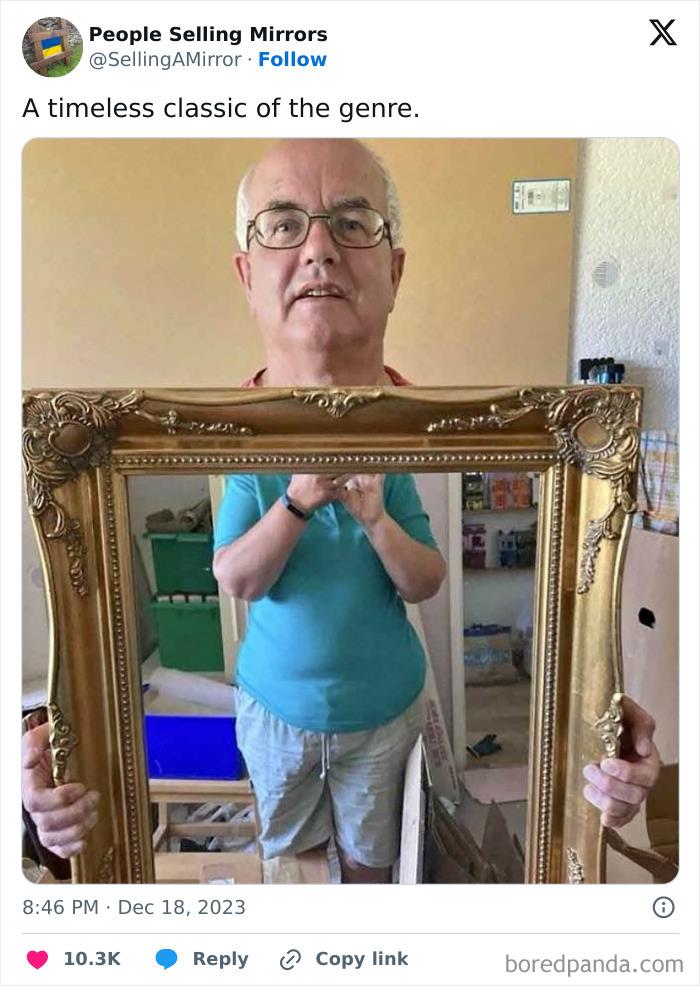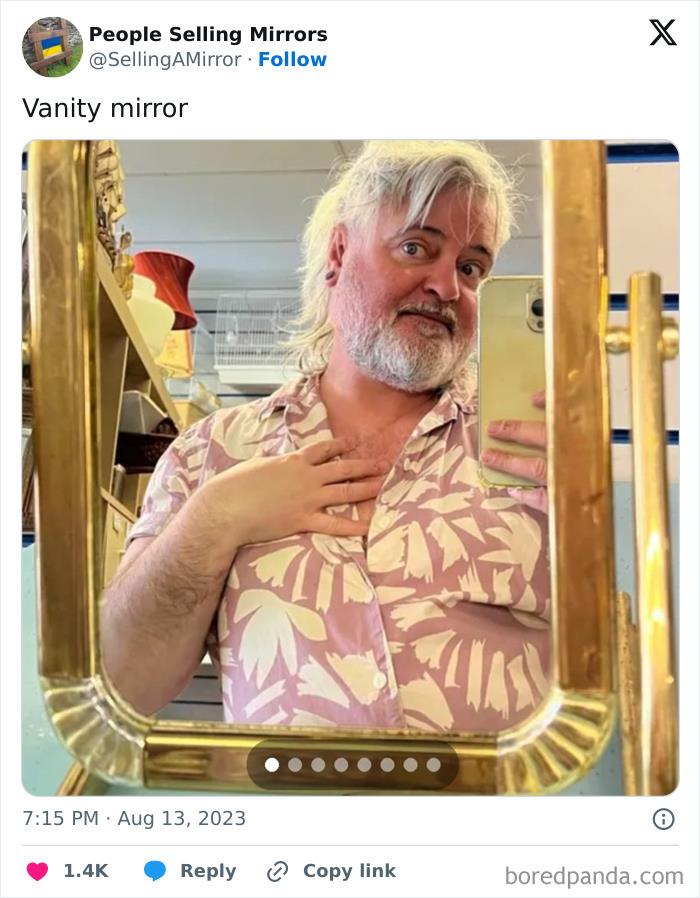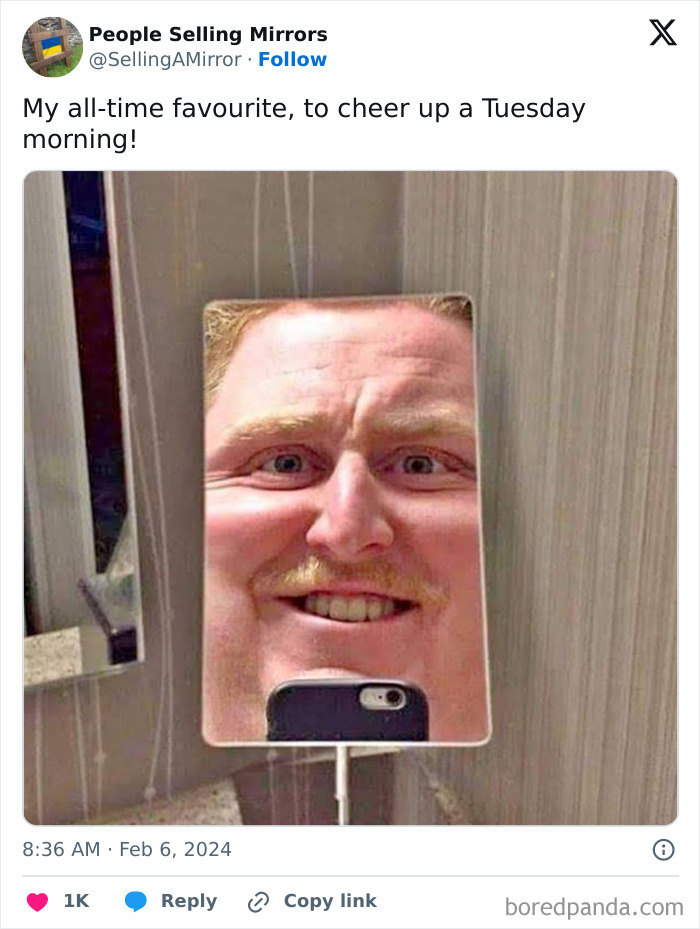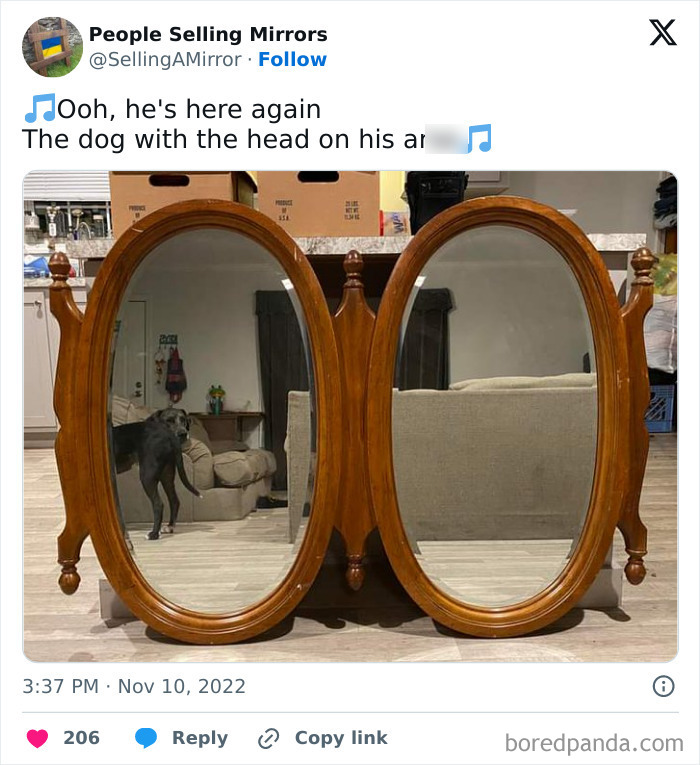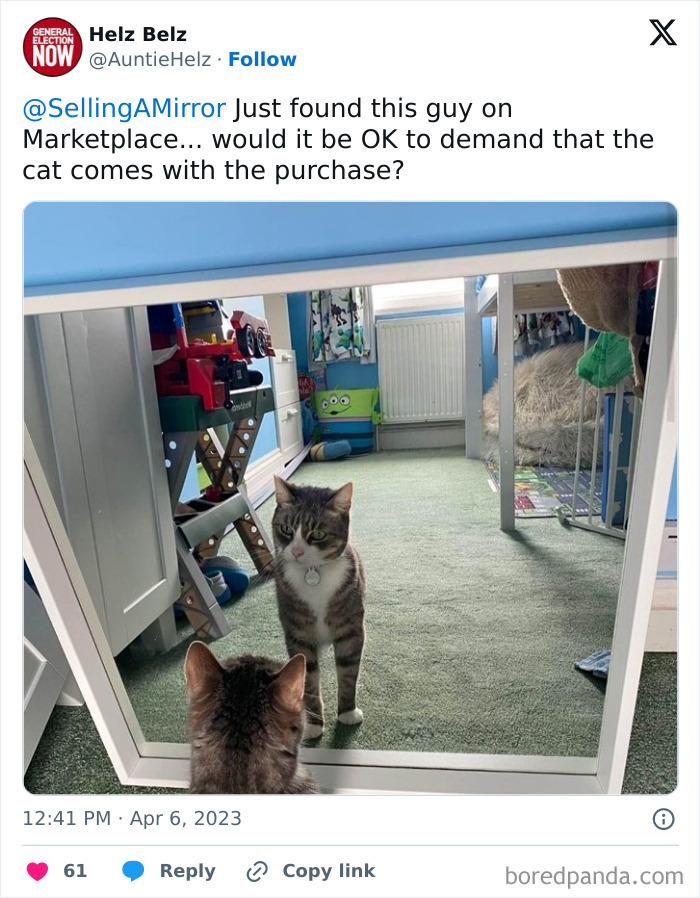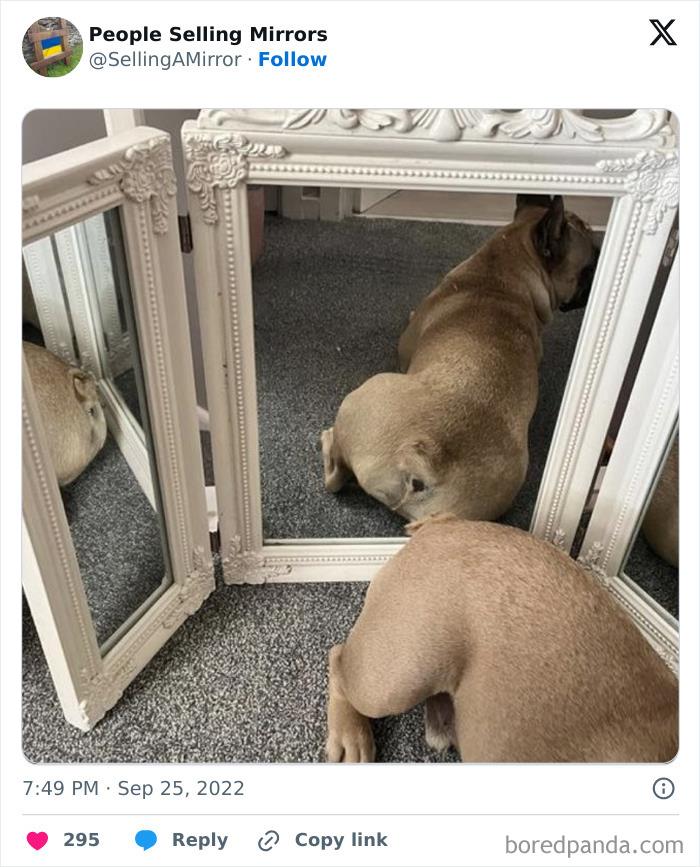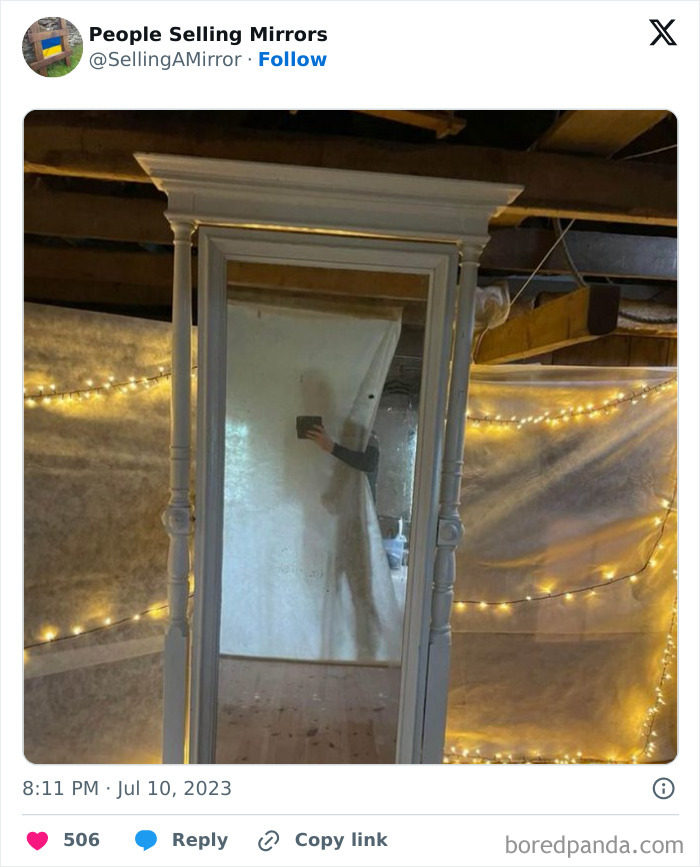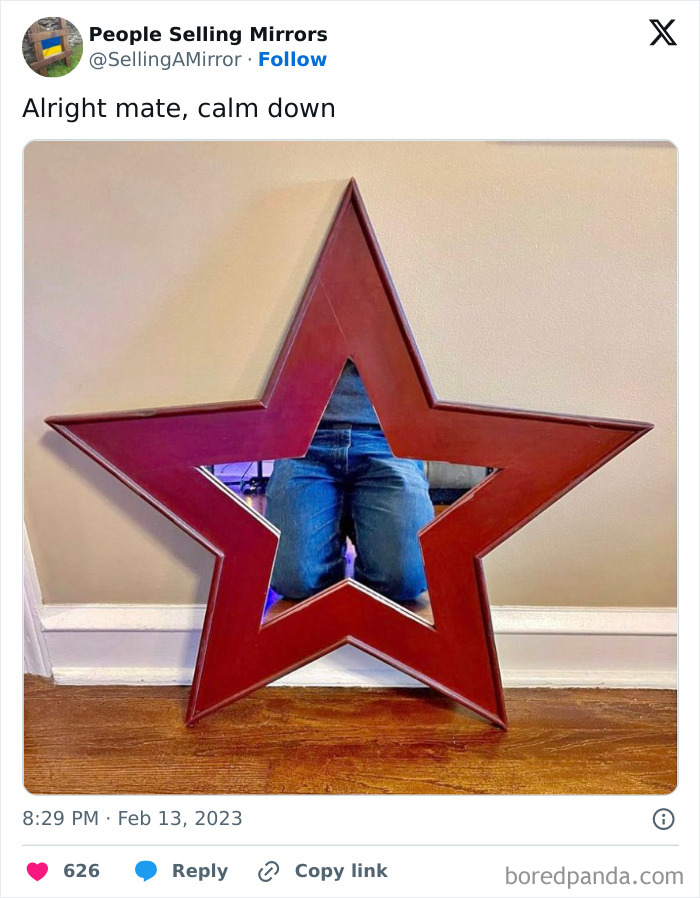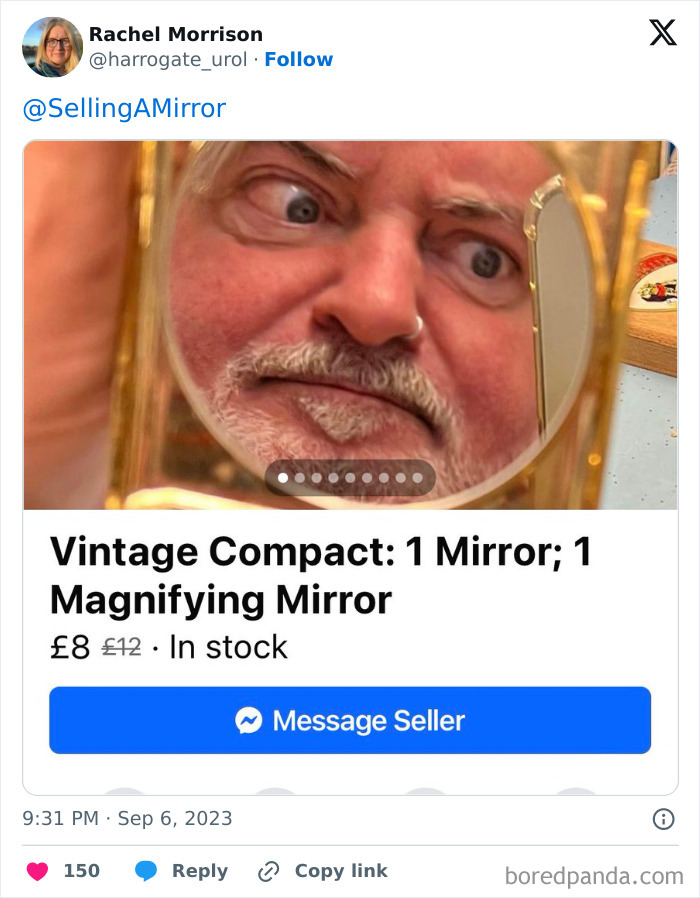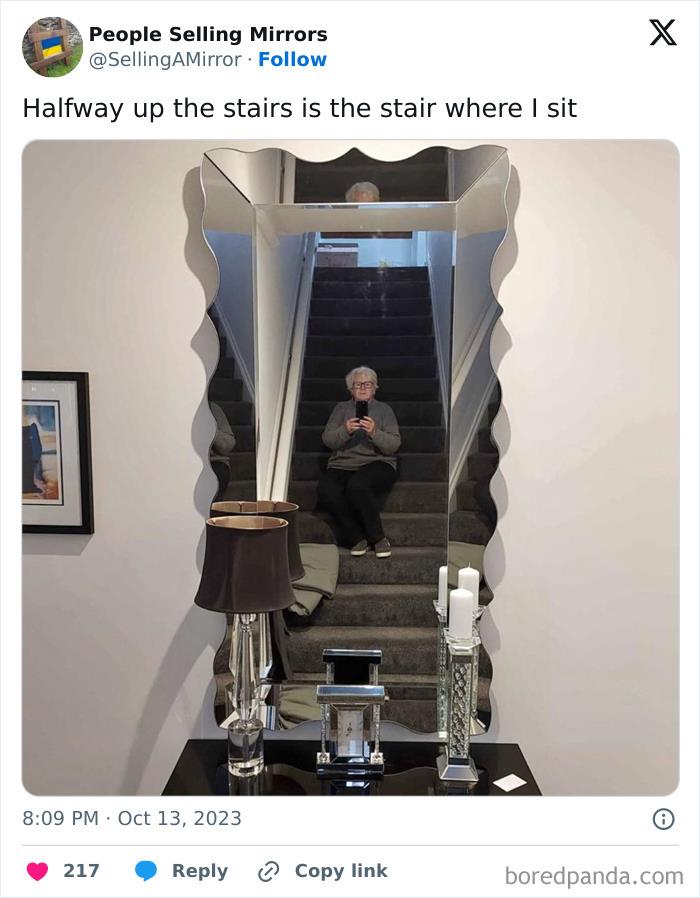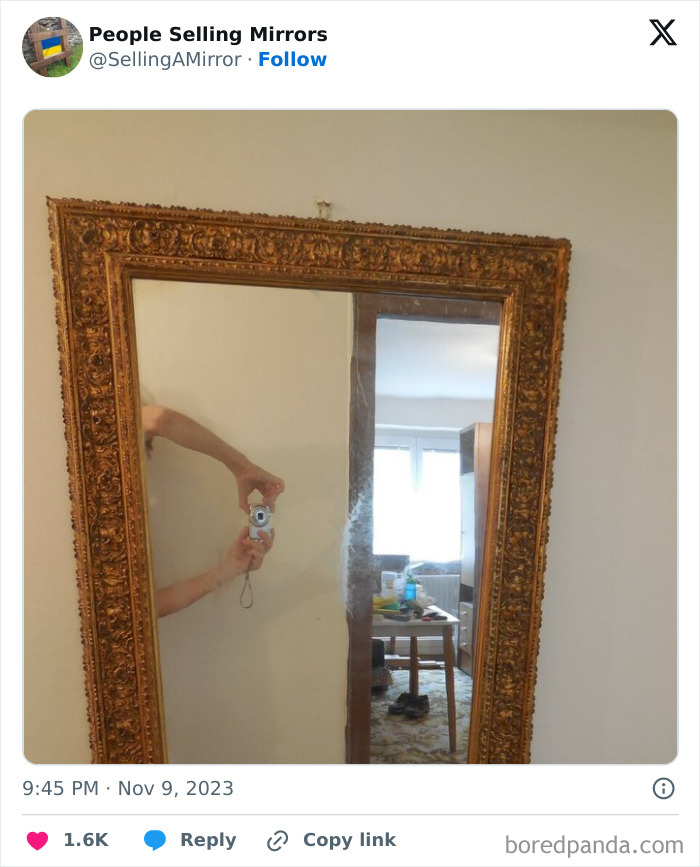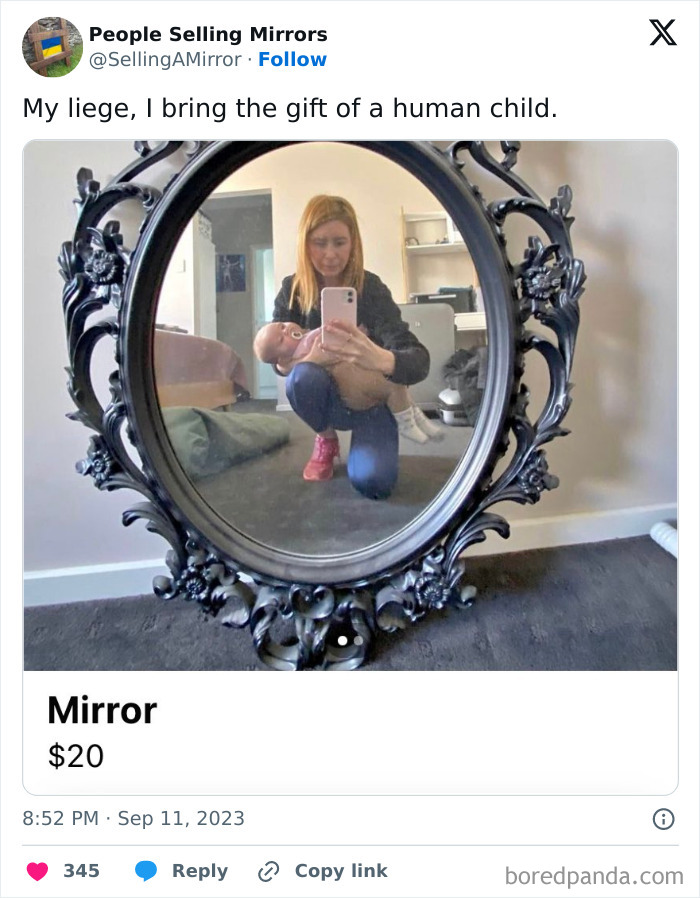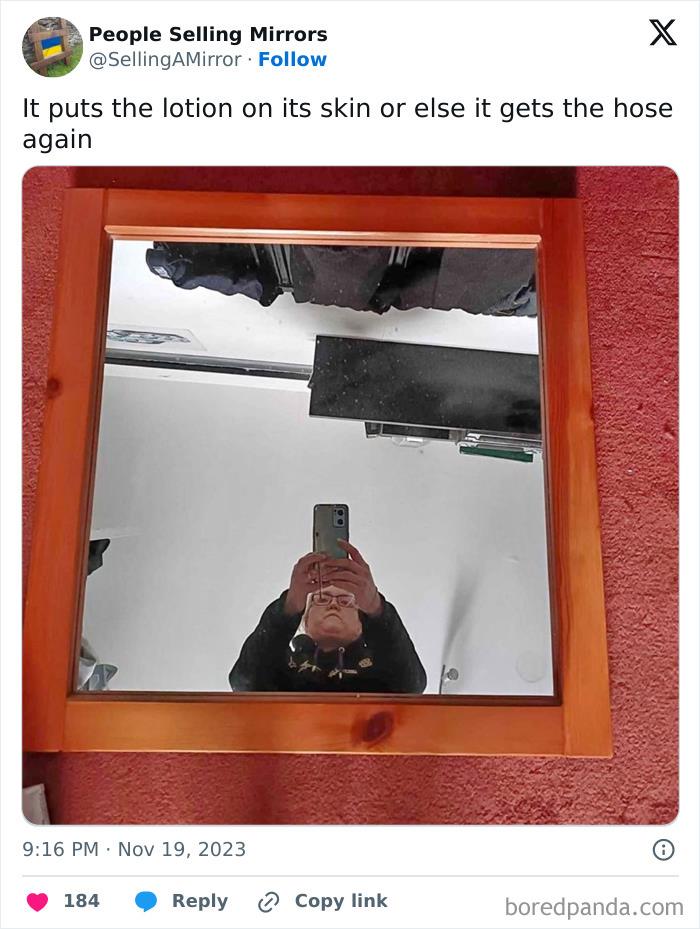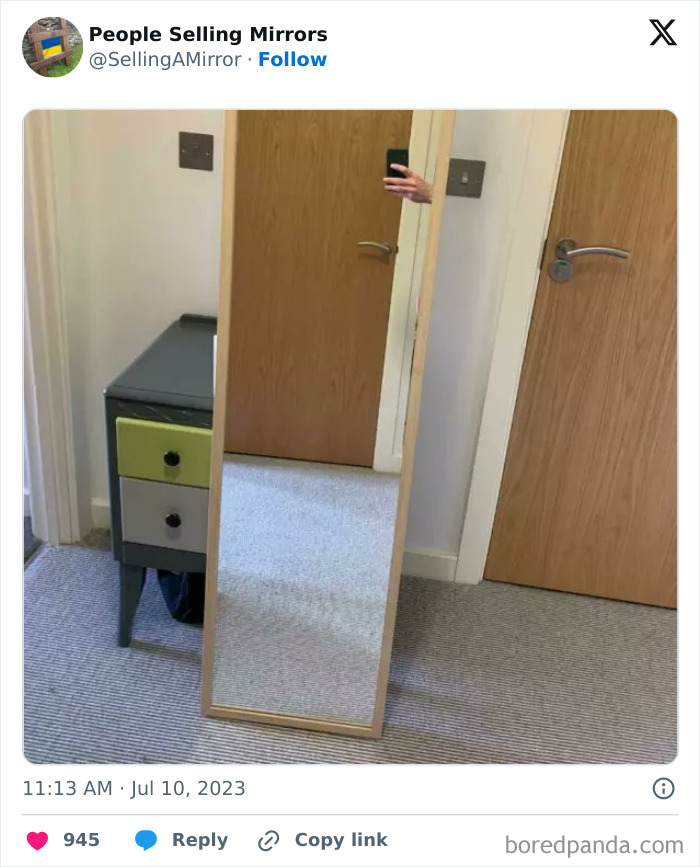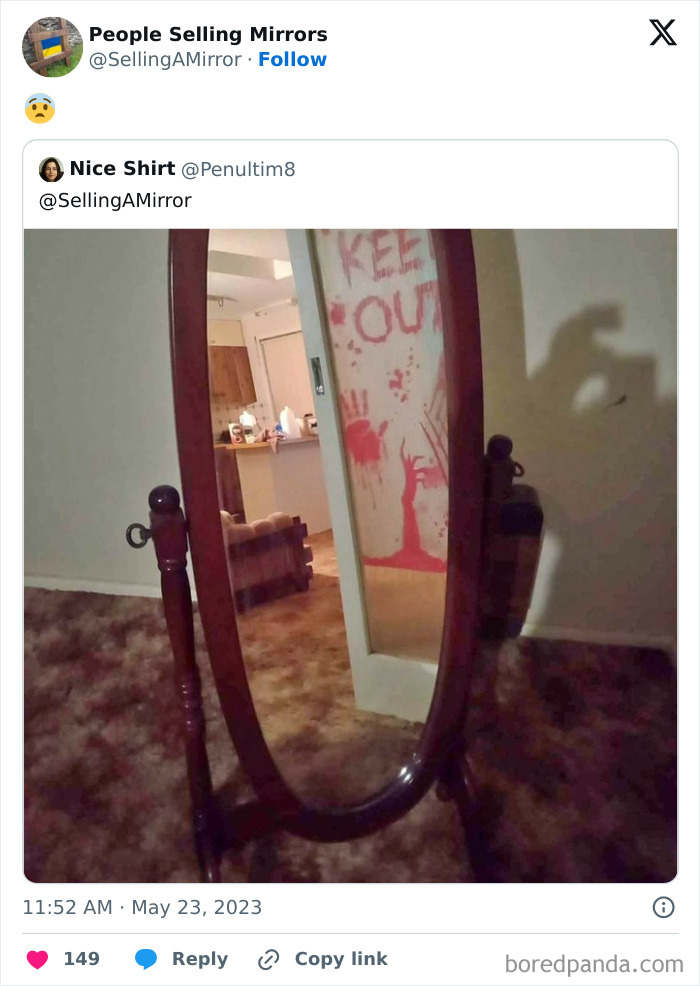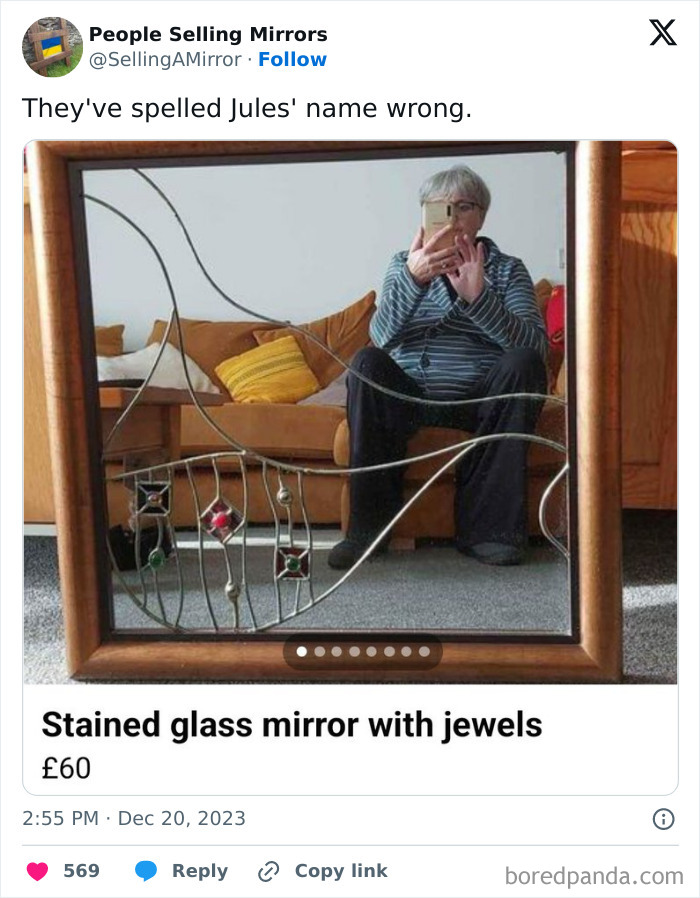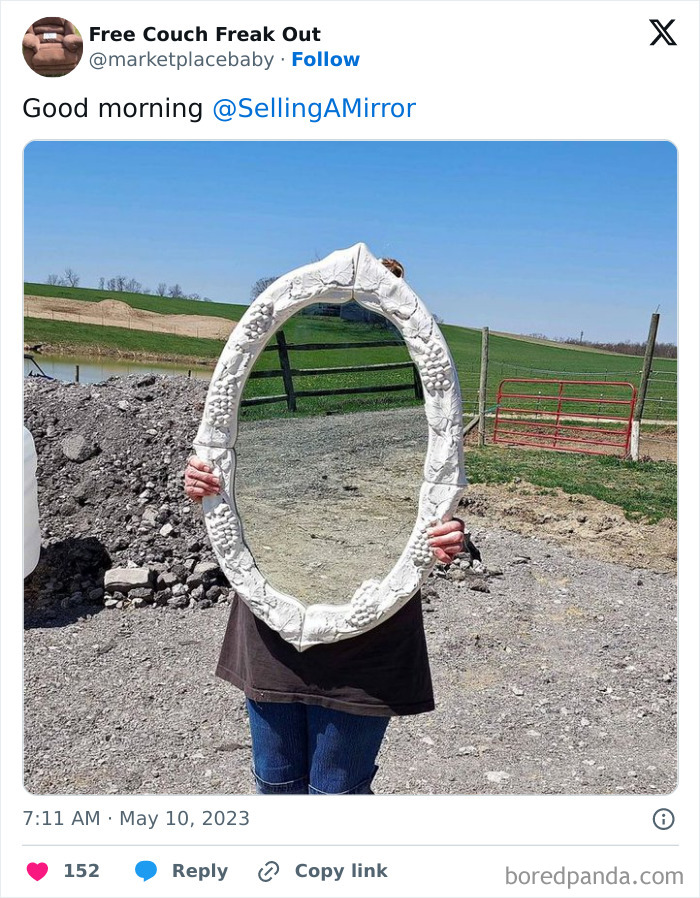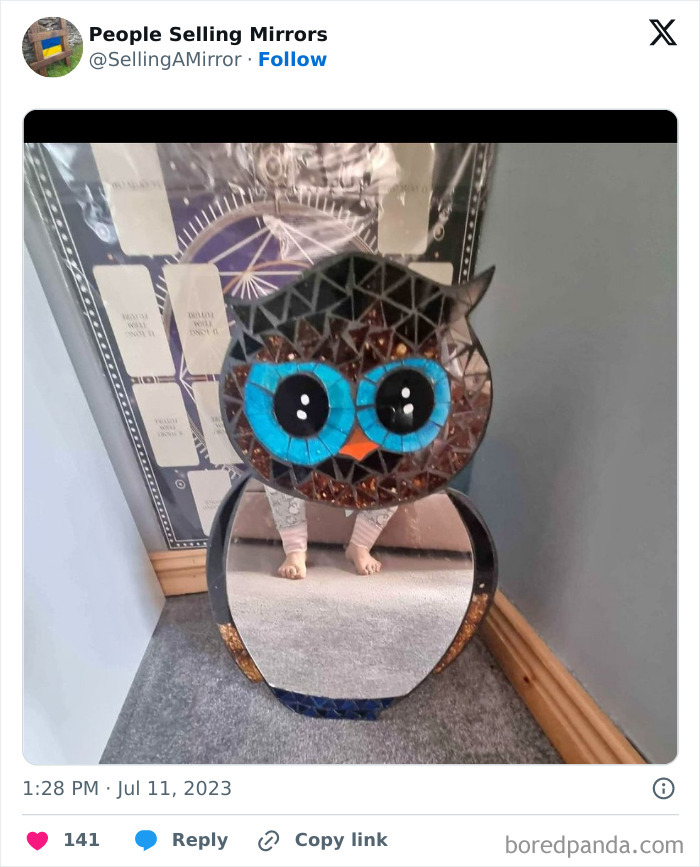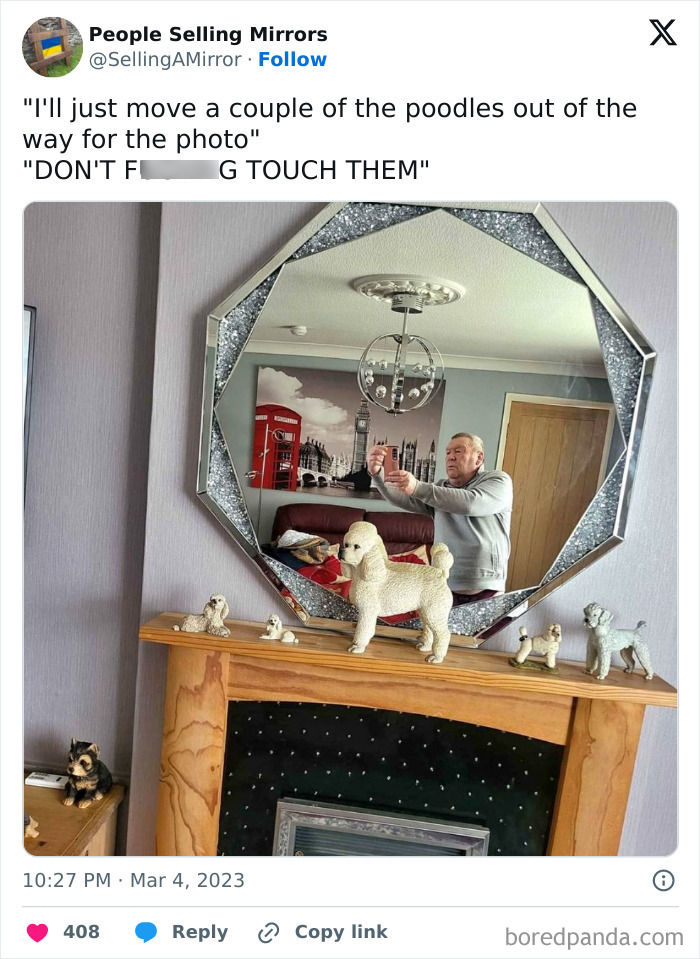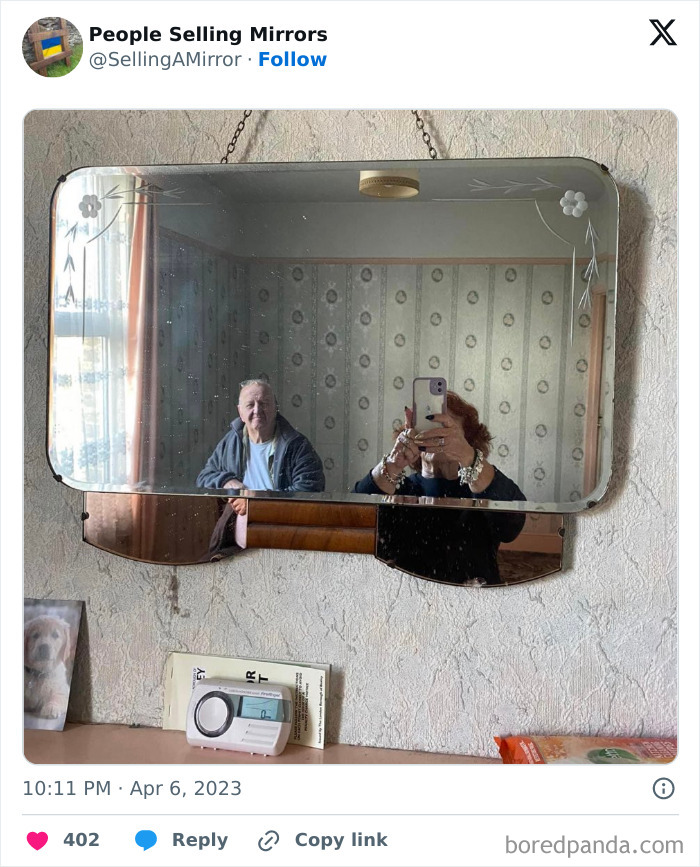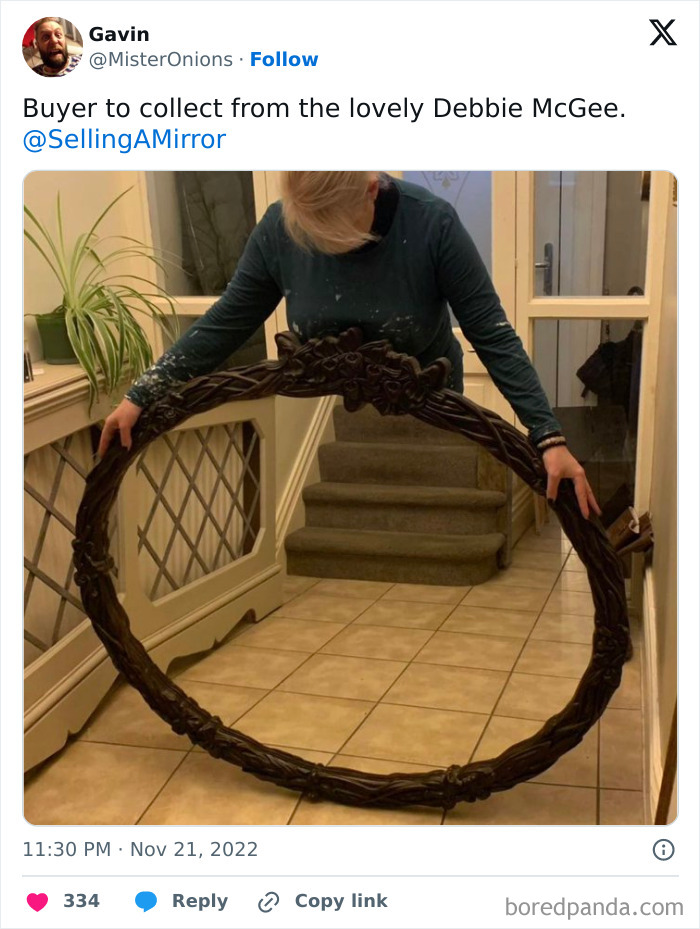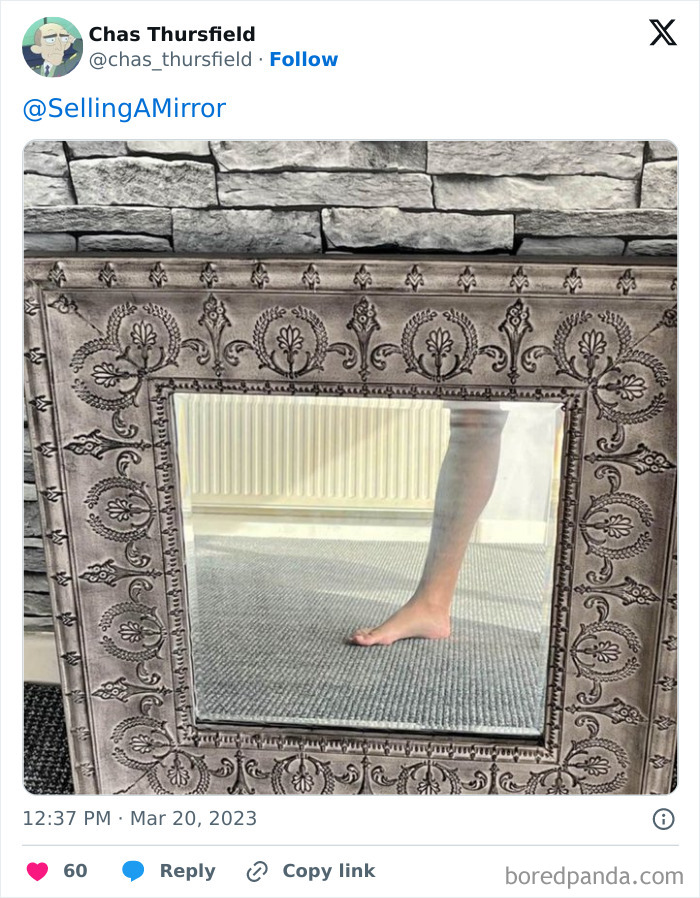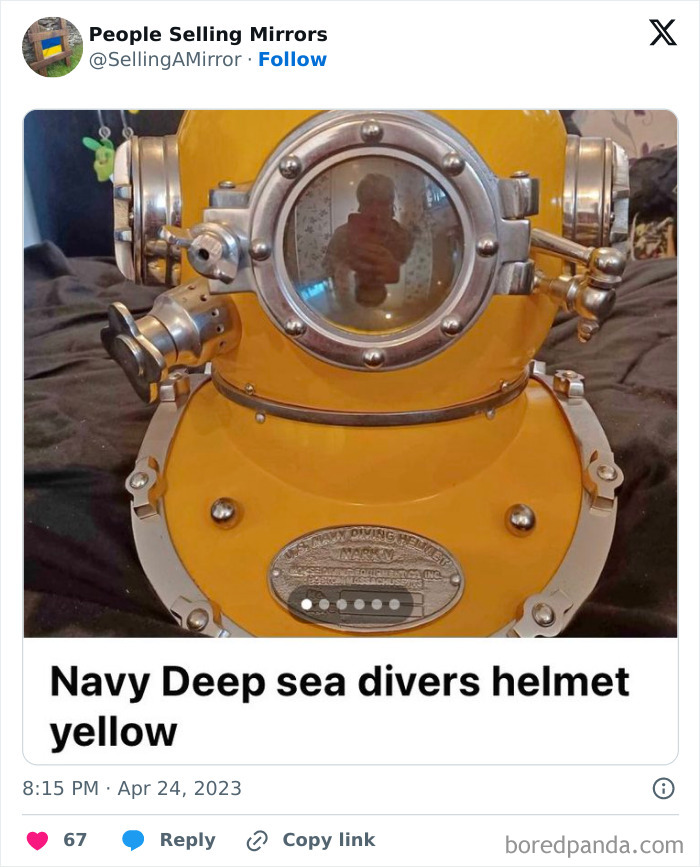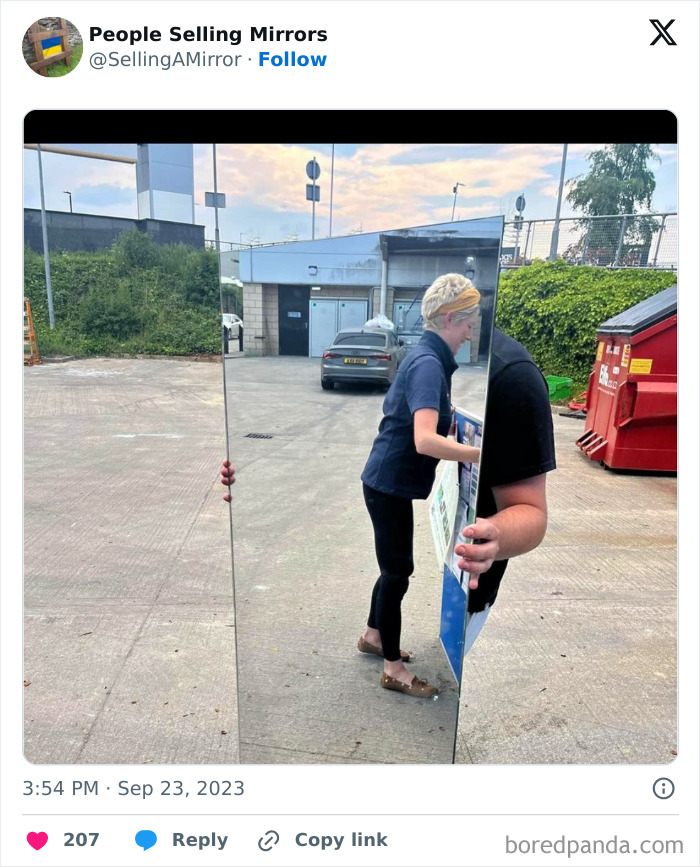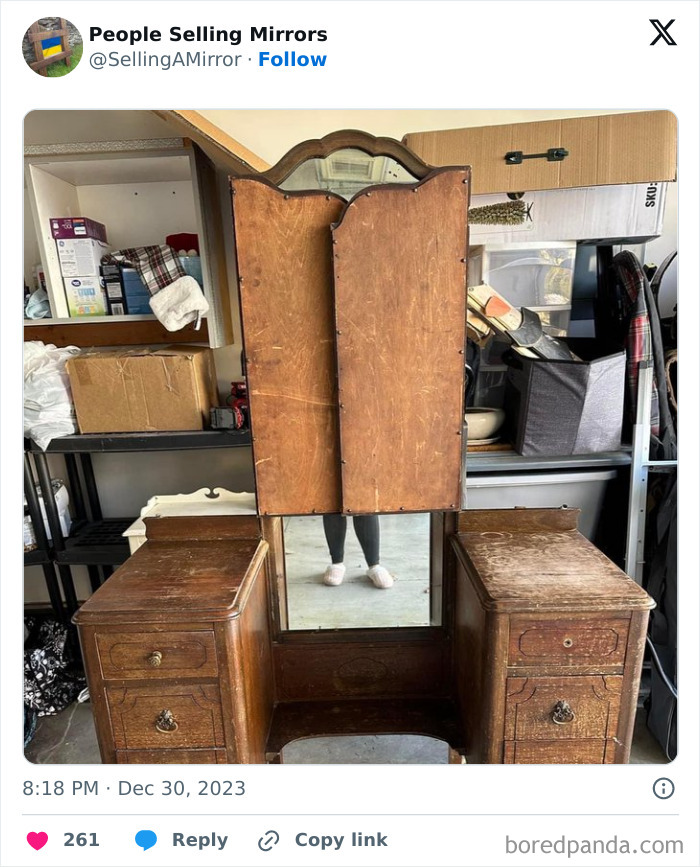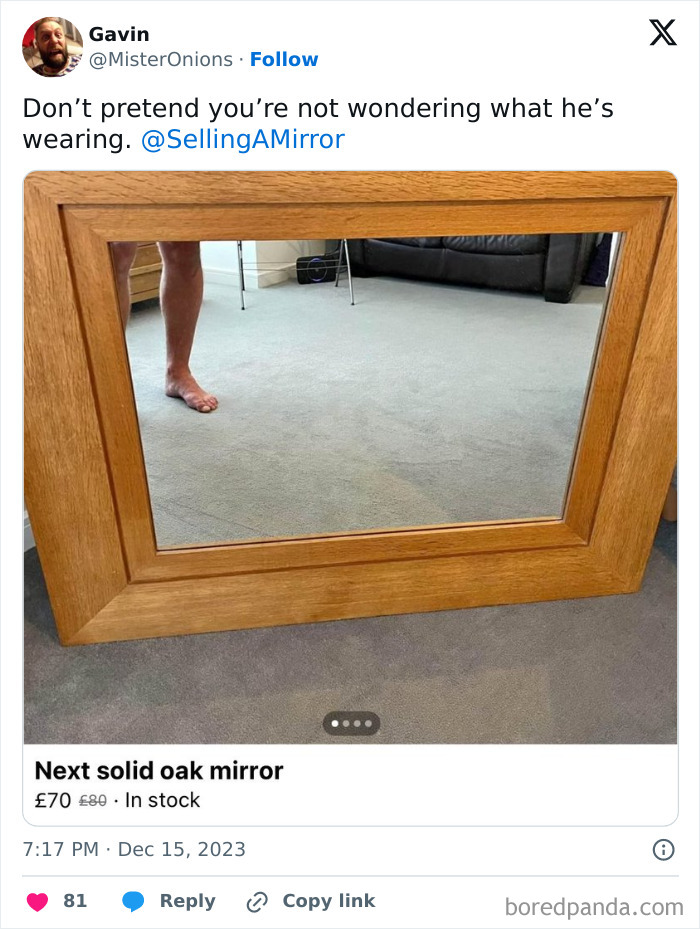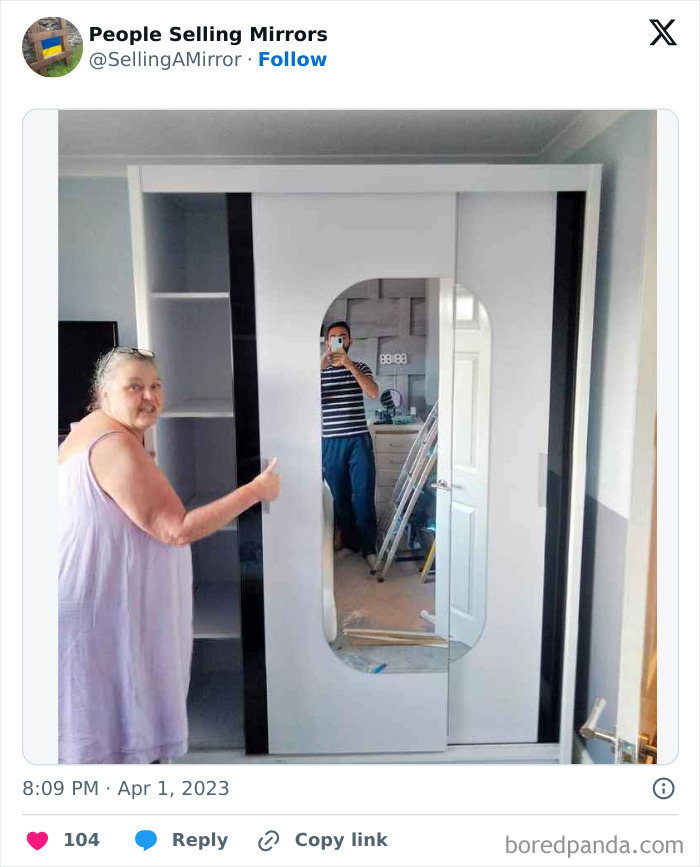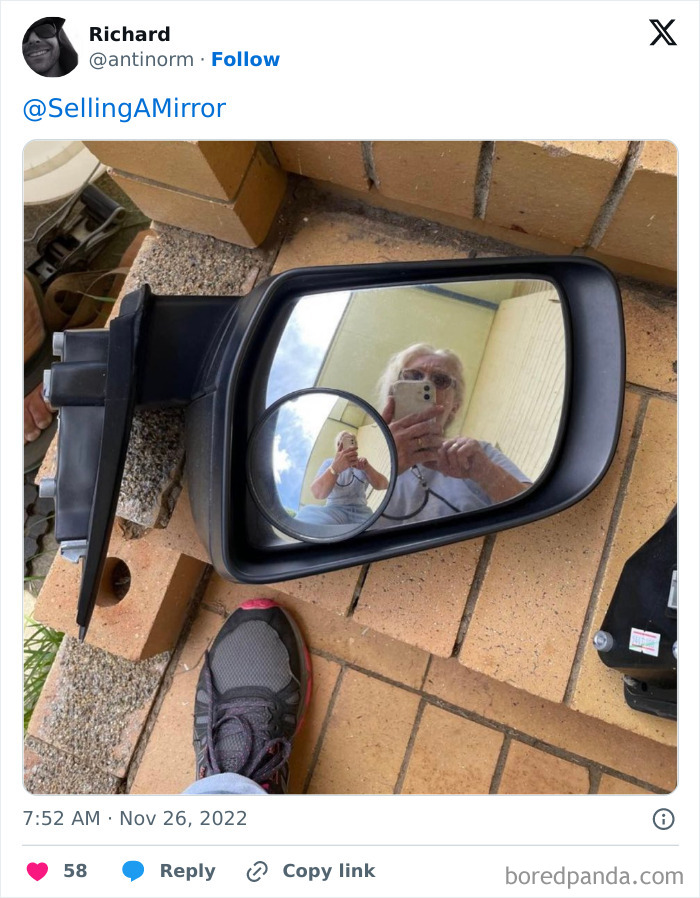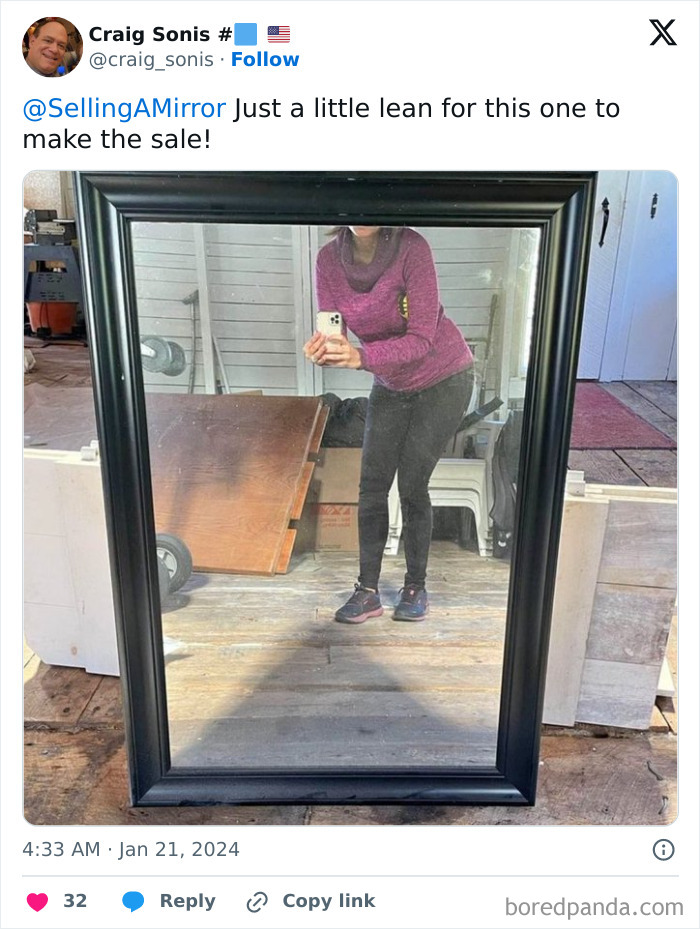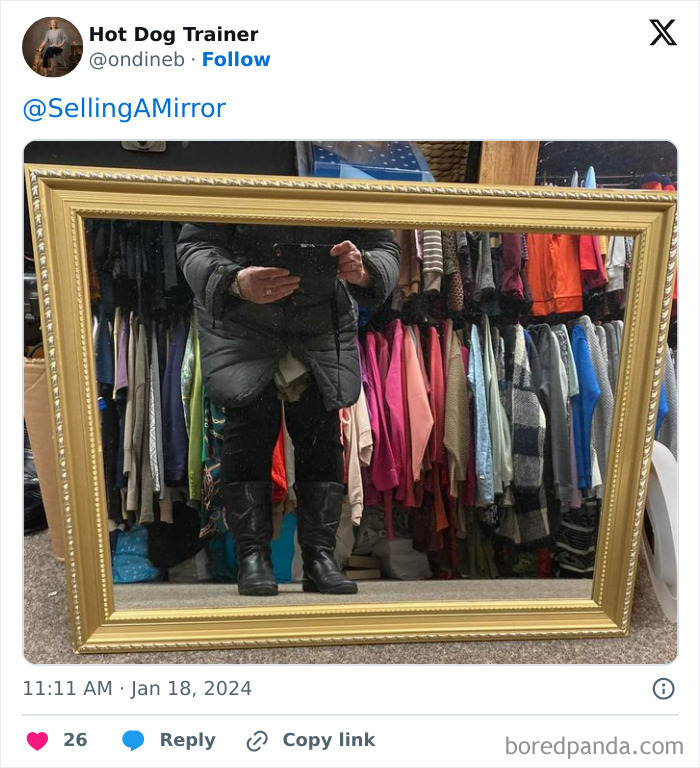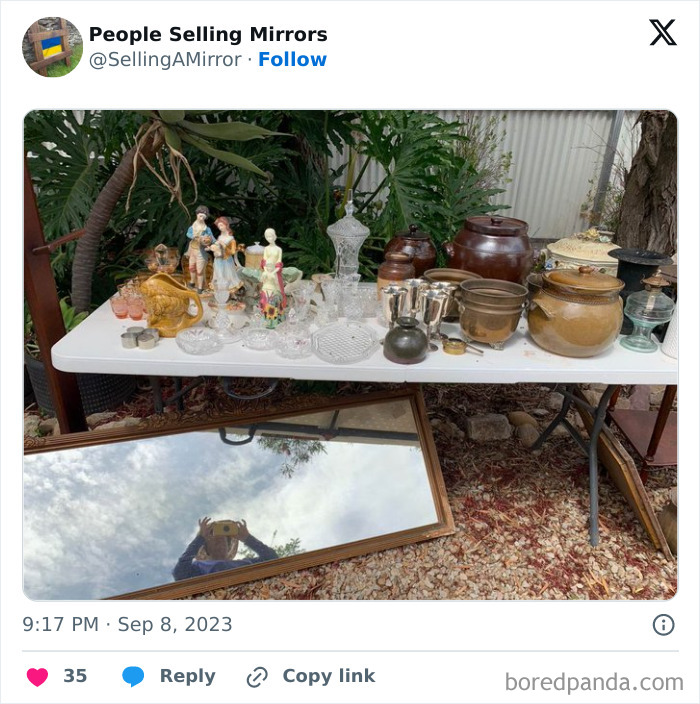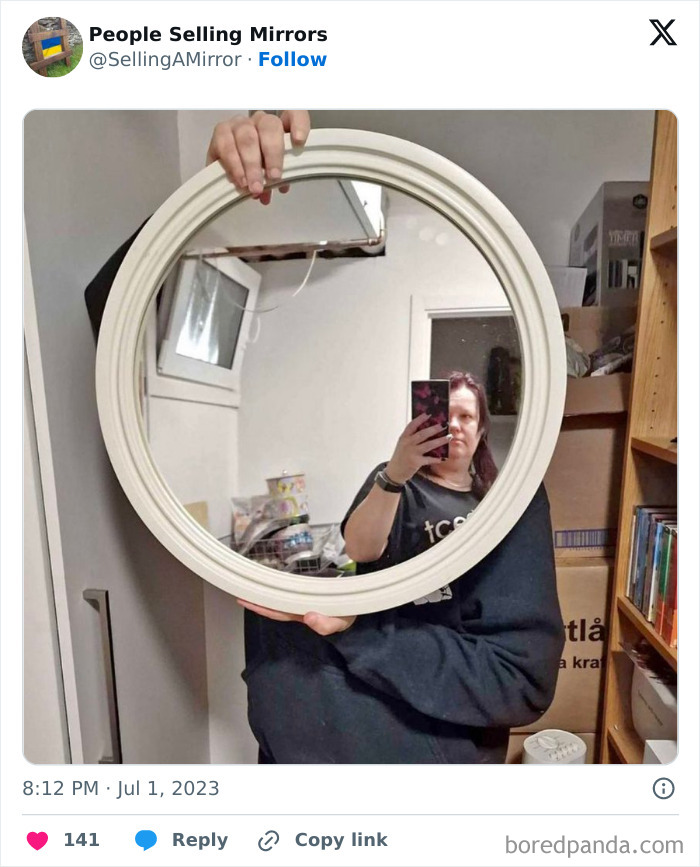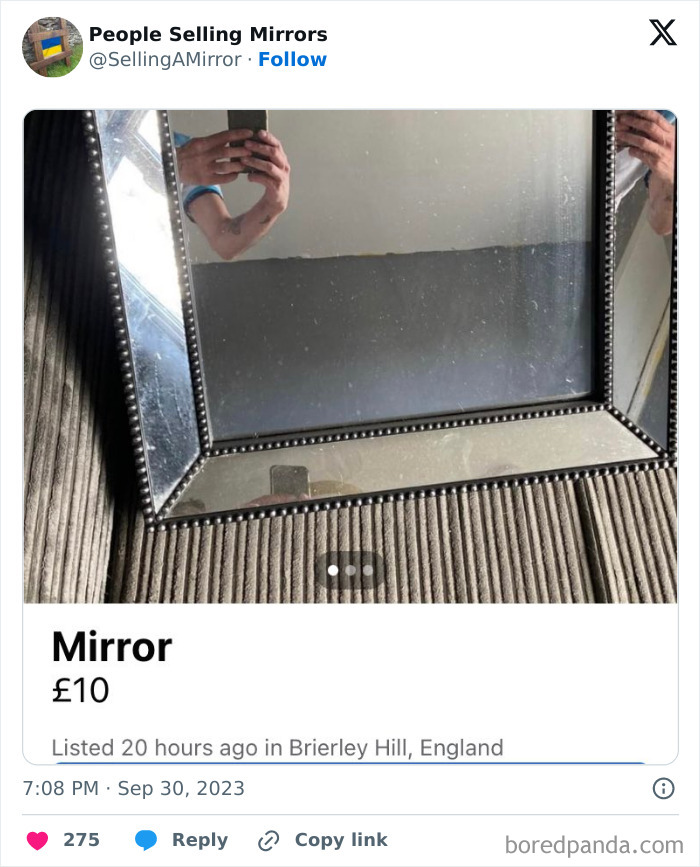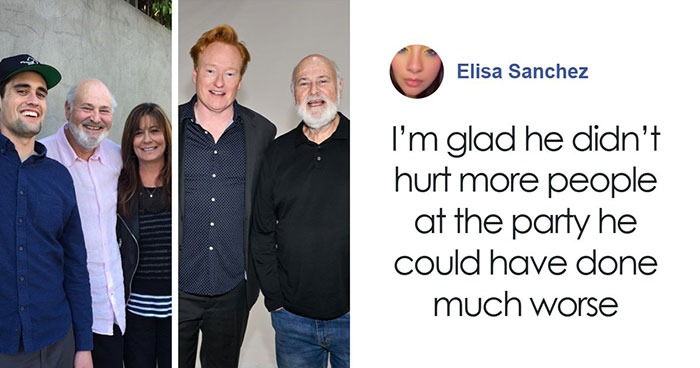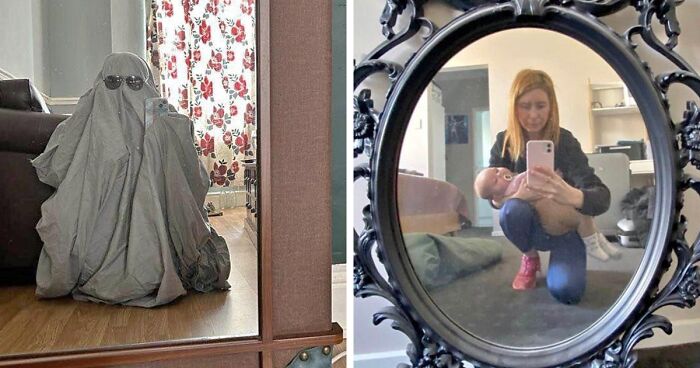
This Page Shares Pics Of People Trying To Sell Mirrors, And It’s Comedy Gold (40 New Pics)
Trying to sell a used item might not be as easy as it sounds, especially when it’s something mundane like cabinets or chairs. That’s why some people put a lot of time and effort into making it look nice or taking great pictures—setting proper lighting, choosing the right angles, and all that jazz—for it to be appealing.
But others can’t be bothered with said jazz; they simply want to take the picture, upload the item, and move on with their lives, which often results in some rather amusing photographs, especially when there are mirrors involved. Apparently, such instances are so common, there’s even an X (formerly Twitter) page dedicated entirely to ‘People Selling Mirrors’. Featuring everything from perfectly set compositions, to hilarious coincidences, and some less successful attempts, the posts ought to bring a smile to your face or at least provide some inspiration if you ever need to sell a mirror yourself; so scroll down to find some of them on the list below and enjoy.
Below you will also find Bored Panda’s interview with the founder of The Institute For Behavior Therapy in New York City and a collector of "psycholectables", Barry Lubetkin Ph.D., who was kind enough to answer a couple of our questions regarding vintage items.
This post may include affiliate links.
The sudden urge to do a general clean-up around the house or declutter a room that’s been wrapped up in ‘do not enter’ barricade tape—not to mention tidying up a hoarder’s dwelling—often results in discovering items that are no longer of use.
And while their existence might have been unknown before, that doesn’t mean they should go straight into the trash (depending on their state, of course). Selling them on one of the many marketplaces online or in a yard sale can be great alternatives, benefiting the seller, the buyer, and the environment, too.
“When one sells a vintage item, they are clearing out some of the clutter from their home, which is often very emotionally satisfying; holding onto unwanted or undesirable items can cause someone to feel stuck,” the founder of The Institute For Behavior Therapy and an avid collector of vintage items himself, Barry Lubetkin Ph.D., told Bored Panda.
“On the other hand, purchasing a vintage item can also be very satisfying. Particularly if it reminds the buyer of something long lost or something that was once seen and desired, but never purchased.”
“Vintage items bring the past into the present as reminders of how stale and unattractive new cookie cutter items can appear when compared with old weathered vintage items, which add zest and excitement to any decor in one's home,” Dr. Lubetkin pointed out.
According to him, it can be difficult to find true gems in antique shops or flea markets, but the sense of satisfaction and excitement that comes with finding something terrific makes the long wait and impatience well worth it. “Finding that gem leads to a sense of great pride that others have missed and you have found something either aesthetically or monetarily priceless.”
Giving an item a second chance in life is an excellent decision on many levels, as it allows the owner to get rid of things that are no longer serving any purpose, other than occupying space, in an environmentally and wallet-friendly way.
The reason it’s important not to rush to throw things away is because of the mind-boggling number of tons people dump on the planet each year; according to The World Counts, it stands at around 2.12 billion tons annually. (Depending on where a person is from, they tend to generate up to 845 kilograms of municipal solid waste each year.)
If you haven't seen little Robin the Frog sing "Halfway Down The Stairs" (from the A.A. Milne poem, "Halfway Down", https://allpoetry.com/Halfway-Down) on THE MUPPET SHOW, here ya go, grab a tissue, and you're welcome! https://www.youtube.com/watch?v=TEDoweeD5o4
A Swedish study on how buying and selling second-hand objects affects the environment found that by reusing objects, people can significantly reduce the amount of CO2 emissions. After examining data from five major marketplaces located in Italy, Spain, France, Sweden and Norway, researchers revealed that users contributed to saving 12.5 million tonnes of CO2 in one year as they didn’t buy new goods nor did they have to throw away the old ones.
While overflowing dumpsters are clearly a serious issue nowadays, it’s important to remember that it’s not only throwing a perfectly fine item away that adds to the bigger problem. Buying a new one is arguably quite detrimental to the environment, too, as production of that item requires materials and energy and involves generating CO2 and production waste.
But the production process is only stage three of the item’s life cycle. While we might not think about it when we buy something, the journey of how that something got into our hands is a rather lengthy one.
looks like an album cover for some folk artist even more so with that title
National Geographic delved deeper into the key stages of a product’s life cycle and the environmental impact, pointing out that it starts with raw materials (stage 1), which then have to be processed (stage 2). What follows is manufacturing the actual product (stage 3) and distributing it (stage 4), using it (stage 5), and disposing of it (stage 6).
While recycling, for instance, is a significant step toward being more environmentally-friendly, it covers only one part of the item’s entire life cycle, which is why buying things second-hand can be a great alternative to encouraging the production of even more of them.
Another environmental benefit of buying second hand is the fact that quite often, it’s done locally. While there are definitely exceptions to this, many people tend to look for second-hand items in local thrift stores, antique shops, marketplaces—even if online but from people located in the area—or yard sales in the neighborhood, all of which are arguably more environmentally friendly than having it shipped from across the world.
Discussing the significance of mirrors in the world of antique hunting, Dr. Barry Lubetkin suggested that for a certain type of person, they hold a special place in psychological understanding.
“For a narcissistic person who looks in the mirror and gazes at their own reflection many times each day, the style, shape, and aesthetic of a mirror can be extraordinarily meaningful because for some, old mirrors make them look more handsome, more beautiful than the new cookie cutter types,” Dr. Lubetkin explained. “For people who are not narcissistic or overly self-involved in their looks, the type of mirror or the age of the mirror can seem quite irrelevant.”
The images shared by ‘People Selling Mirrors’ show that some sellers are not only environmentally friendly, or at least financially savvy, but seem to have a good sense of humor, too. And if you enjoy this type of amusing or somewhat unexpected ads and listings, feel free to continue to Bored Panda’s previous pieces on comedy gold on Facebook marketplace or hilarious online listings for more.
I've seen my fair share of people accidentally getting into a photo, including one woman in a very skimpy nightdress who I'm sure was horrified when someone told her! For pure gold, bathroom cupboards are hilarious as people tend to forget that those mirrors reflect, too. The worst is when you see the prized piece advertised as "good as new" in a grungy, filthy garage or warehouse, surrounded by more grunge!
There's a group of men who 'inadvertently' take nude photographs of themselves in reflective surfaces. The objective is to be subtle, but naked.
Load More Replies...I've seen my fair share of people accidentally getting into a photo, including one woman in a very skimpy nightdress who I'm sure was horrified when someone told her! For pure gold, bathroom cupboards are hilarious as people tend to forget that those mirrors reflect, too. The worst is when you see the prized piece advertised as "good as new" in a grungy, filthy garage or warehouse, surrounded by more grunge!
There's a group of men who 'inadvertently' take nude photographs of themselves in reflective surfaces. The objective is to be subtle, but naked.
Load More Replies...
 Dark Mode
Dark Mode 

 No fees, cancel anytime
No fees, cancel anytime 









